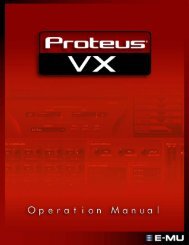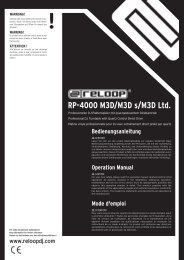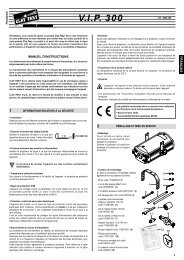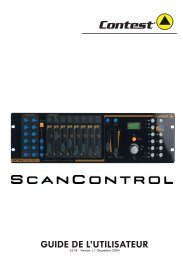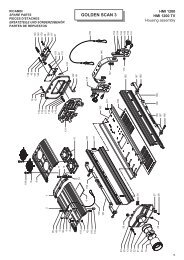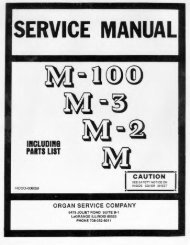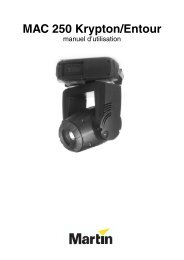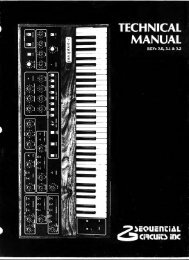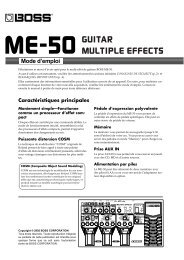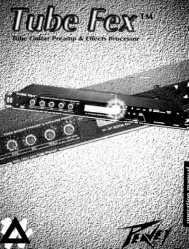Create successful ePaper yourself
Turn your PDF publications into a flip-book with our unique Google optimized e-Paper software.
The Algorithms and their ParametersCompressorThe Compressor algorithm is a true digital compressor which will run in eitherDual Mono or Cascade Setups. In Dual Mono Setups, it configures to mono inmono out; in Cascade Setups it configures as a true stereo effect. Thecompressor can be described as an upwards averaging compressor. Digitalcompressors, like analog compressors, decrease audio above a given threshold.Unlike analog compressors, they increase gain below the threshold. Theresult from either analog or digital compression is exactly the same — lessdynamic range.General DescriptionAs shown in the diagram below, the audio path takes two routes. One path goesthrough a predelay mechanism which delays the audio a maximum of 48 ms. Theother path sends control information (dependent on the settings of slope,threshold, attack and release) to “digital VCA’s” labeled MAX COMP GAIN andEXP GAIN. As the signal crosses the threshold point, both Compressor Gainand Expansion Gain vary constantly. Compressor Gain determines the maximumamount of gain increase below the threshold; Expansion Gain determinesthe maximum amount of gain attenuation below the threshold.Generally, digital compression requires lower threshold settings than analogcompression. The reason for this is that there is no such thing as headroom ina digital system — dBfs (Digital Full scale [0VU]) is the maximum level audio.Audio dynamics below full scale, however, can be manipulated and modified.Example1. Press SETUP SELECT and turn the Softknob to select Cascade Setup: 313STEREO COMP. This preset loads the stereo compressor into both machinesbut mixes Machine B to full dry. (no point in compressing twice!)2. Press ENTER to load the preset.3. Press EFFECT EDIT. Note the front panel level meters and try to establishthe average input level. A simple approach might be to look at the peaks andvalleys in signal amplitude and estimate the middle ground. If this all seamstoo complicated, just select THRS and set it to -17dB.4. Select GAIN and set it to Max (9 dB). At this point there should be no effecton the dynamics because you’ve not yet adjusted the slope parameter.5. Select SLP and increase it to 2.0 : 1 (a 2 to 1 Compression Slope). Now youshould hear a change. If you still do not hear a net effect, readjust THRS untilsomething becomes audible. Remember, as you adjust the thresholdclockwise (closer to digital full scale) more and more audio will be gainincreased — overload can occur!!The whole purpose of a digital compressor is to maintain peaks while compressinglower level audio signals upwards. If you think about it in terms of the mostsignificant and least significant bits, you would never want to reduce the mostsignificant bits — you want to increase the least sigificant bits.Adding some pre-delay gives the control mechanism time to react before theaudio reaches the digital VCA. Of course, the more predelay you add, the more“out of sync” the audio will become. Attack constants should be kept to shortvalues (7,15, or 30ms). A good starting point for release time is 91 or 114 ms.4-31


